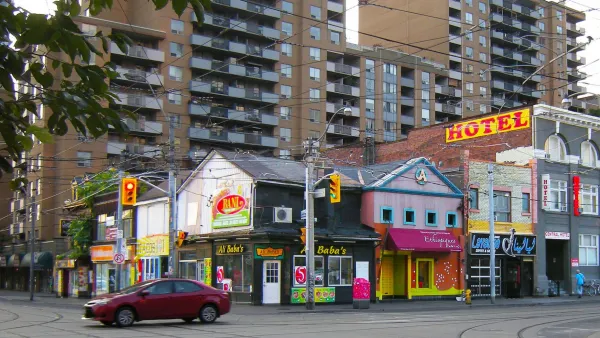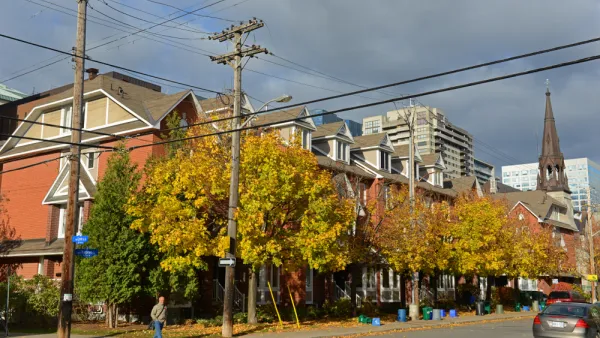In the fifty years since Jane Jacobs introduced the "eyes on the street" theory, it's become a commonly accepted conceit that a mix of use reduces crime. A new study calls that theory into question.
"Jane Jacobs 'had it backwards,' according to a report in this month’s University of Pennsylvania Law Review."
Matt Bevilacqua discusses the findings reported by researchers from RAND, the University of Pennsylvania, and the University of Southern California.
"Focusing on more than 200 blocks in eight high-crime Los Angeles neighborhoods, the report found that areas zoned for mixed-use development had lower crime rates than those zoned for commercial uses only. Areas purely made up of residences, however, had lower crime rates than either."
“[W]e find that residential zoning is associated with substantially lower crime than commercial zoning or mixed-use zoning,” the researchers write, later adding, “With respect to natural surveillance, we find no support for Jacobs’s argument that commercial uses will reduce crime by encouraging a robust street life and ‘eyes on the street.’”
"The report also notes that assaults, robberies, thefts and burglaries decreased when residential housing was introduced into single-use commercial zones," adds Bevilacqua. "These crimes increased, however, when businesses were introduced into residiential-only [sic] areas, backing up the notion, for one, that a 'place of business in a residence neighborhood furnishes an excuse for any criminal to go into the neighborhood.'”
"The authors do stress the need for further research on the built environment before drawing any definitive conclusions about its effect on crime rates," he concludes. "So it will take more evidence before we can heed the suggestion that new urbanists have been mixing it up all these years."
FULL STORY: Researchers Challenge Jane Jacobsian Notion that “Eyes On the Street” Reduce Crime

National Parks Layoffs Will Cause Communities to Lose Billions
Thousands of essential park workers were laid off this week, just before the busy spring break season.

Retro-silient?: America’s First “Eco-burb,” The Woodlands Turns 50
A master-planned community north of Houston offers lessons on green infrastructure and resilient design, but falls short of its founder’s lofty affordability and walkability goals.

Delivering for America Plan Will Downgrade Mail Service in at Least 49.5 Percent of Zip Codes
Republican and Democrat lawmakers criticize the plan for its disproportionate negative impact on rural communities.

Test News Post 1
This is a summary

Test News Headline 46
Test for the image on the front page.

Balancing Bombs and Butterflies: How the National Guard Protects a Rare Species
The National Guard at Fort Indiantown Gap uses GIS technology and land management strategies to balance military training with conservation efforts, ensuring the survival of the rare eastern regal fritillary butterfly.
Urban Design for Planners 1: Software Tools
This six-course series explores essential urban design concepts using open source software and equips planners with the tools they need to participate fully in the urban design process.
Planning for Universal Design
Learn the tools for implementing Universal Design in planning regulations.
EMC Planning Group, Inc.
Planetizen
Planetizen
Mpact (formerly Rail~Volution)
Great Falls Development Authority, Inc.
HUDs Office of Policy Development and Research
NYU Wagner Graduate School of Public Service





























